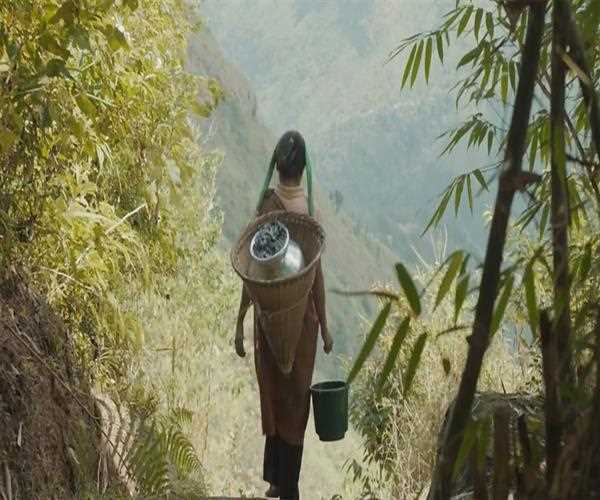Search here

02-Apr-2024 , Updated on 4/3/2024 2:08:00 AM
Indian Town of Sohra the wettest place on earth is facing water crisis why?
Sohra, also known as Cherrapunji, located in the state of Meghalaya is known to be the wettest place on the earth. Since the rainwater was enough, the forest there used to have lush green trees, sophisticated ecologies, and vibrant societies. But on the flip side, Sohra, the wettest place in India, is now also challenged due to a water crisis on a scale that the residents have never seen in recent years. This blog highlights the factors behind the water crisis in Sohra, the damage it has caused to locals, and the immediate solutions to the serious problem.
Decline in Rainfall
The title of Sohra
wettest spot on the planet carries back to the year 1861 when it was recorded as the wettest place having an annual rainfall of 22,987mm. Through the years the town experienced large amounts of precipitation which supplied the rich green plants with water spurring their growth, reproducing and surviving, and maintaining the local biodiversity.
Contrary to this, Sohra has recorded a fundamental drop of almost 52% in average rainfall per year since 2017 with 11,430mm being annual statistics. The drastic reduction in precipitation, mostly since the 1970s, has been a clear indication that these problems are looming. The water tackling in the town is very low and the water scarcity is far from being solved.
Deforestation and Ecological Damage
Another very influential factor is mass deforestation and general ecological destruction across this part of the country. Sohra and its Green covers have contributed enormously to maintaining the atmospheric balance under the older method of weather regulation.
Although deforested areas in these forests remain, the desire for money and political favor by some has caused deforestation, particularly by individuals engaged in illegal logging and political patronage. As a result, these forests have experienced disturbance to natural water retention processes. Therefore, more amount of water is flowing immediately as runoff, lowering the chances of groundwater recharge, and further making the issue severe.
Population Growth and Urbanization
Also, the fast-growing population and urbanization coupled with environmental problems have caused the Sohra water resources to be stolen in a short time. Over the past two or three decades, the town has observed a thousand-fold rise in its population thus putting a lot of strain on its water infrastructure which is old and far from modern.
Unlike before, the water supply which was designed for a small number of people is no longer enough to meet the increased demand, especially during the dry banks from November to March. With the rapid expansion of urbanization, the issue of efficient and sustainable water management has become a pressing concern.
Impact on Daily Life
The water emergency at Sohra is devastating the population, especially people in the poorest regions. Clean water for drinking, cooking, and sanitation is becoming more difficult to economize; consequently, most people are spending more time and energy in relief of safe water sources. Mostly women and children, who are typically doing this work to collect water, undergo these burdens. They put their energy into hunting for water, which equates to losing out on their education and economic opportunities. In addition, prolonged water scarcity constitutes a health risk that is caused by inadequate sanitation facilities that lead to waterborne diseases and hygiene problems.
Insufficient Adaptation Plans
In addition to the recurrent shortage of water, Sohra has no policy on water supply and utilization that could usefully deal with the issue. Rainwater harvesting system, one of the well-tried methods of water supplies increasing in the water-scarce regions, is still underused because of the absence of knowledge and the underestimation of the infrastructure.
Furthermore, the lack of an effective regulatory framework to check deforestation and appropriate sanitation brings the town water problem into more serious woes. In case no steps are taken to save and manage water resources, Sohra's water crisis will not only remain acute but is likely to aggravate if nothing is done.
Climate Change and Uncertain Future
The water crisis in Sohra ultimately portrays its consequences and broader problems associated with climate change and environmental degradation. Probably the most considerable climate change has been caused by declining yearlong rainfall, increasing temperatures, and moving from cooler to extreme weather. And as Sohra tries to overcome its water problems, it will face an uneasy future with a high degree of exposure to climate risks. Water adaptation and resistance-building measures must be taken to resolve the effects of climate change and ensure a more sustainable water future for Sohra as well as its people.
Conclusion
Transforming Sohra from the wettest place on earth to a town addressing water shortage affirms the need for natural and comprehensive water management regulations. The water crisis is a problem, which must be tackled with the unanimous support of local communities, government authorities, and civil society organizations. Through investment in water infrastructure, rainwater harvesting promotion, sustainable land management, and community engagement, we can achieve this goal.

Student
An MBA in finance imparts and improves management aptitude, inventive ability, critical thinking ability, and so forth. It offers a real-time experience that fabricates a staunch career foundation for students and working professionals. It helps them to thoroughly understand the financial sector.
Comments
Join Our Newsletter
Subscribe to our newsletter to receive emails about new views posts, releases and updates.
Copyright 2010 - 2025 MindStick Software Pvt. Ltd. All Rights Reserved Privacy Policy | Terms & Conditions | Cookie Policy